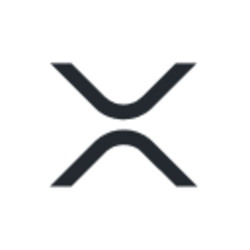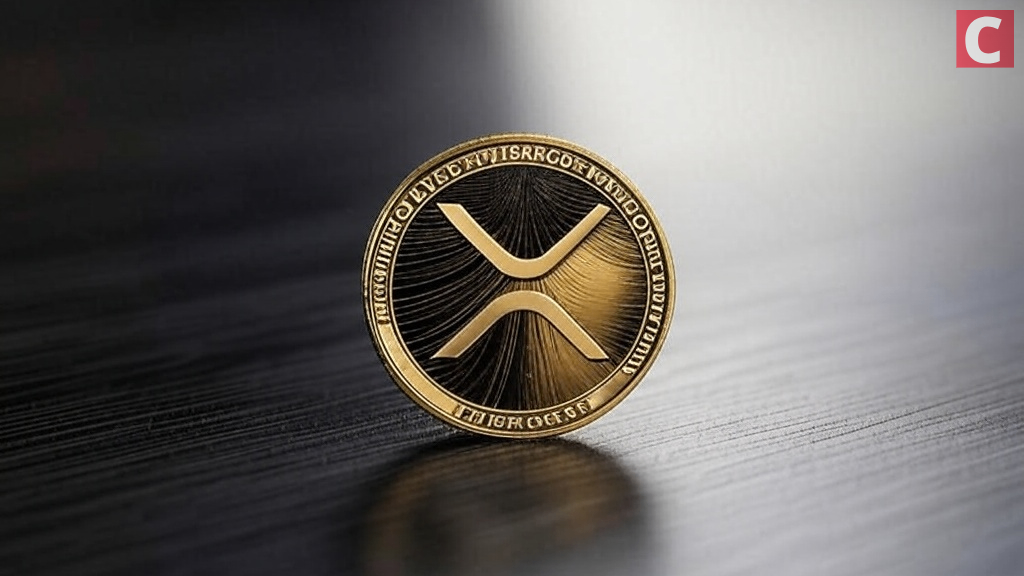
Ripple President Monica Long Stuns XRP Army with Product Advancement Updates
President Monica Long confirmed Ripple Labs’ $1.25 billion Hidden Road purchase, emphasizing XRP and RLUSD enterprise integration.


1H
-0.02%$0.0004
24H
-0.82%$0.0181
7D
5.44%$0.1130
30D
-6.84%$0.1608

President Monica Long confirmed Ripple Labs’ $1.25 billion Hidden Road purchase, emphasizing XRP and RLUSD enterprise integration.

Top derivatives firm, CME Group, is set to launch XRP futures in May, offering more options for traders in the digital asset market.

Ripple-linked XRP’s price may be repeating its 2017 cycle, as EGRAG CRYPTO forecasts a rise to $27 with increasing activity and interest in the token.

XRP has surged to $2.22 with a 7% daily gain, and analysts are pointing to a potential breakout to $2.70.

XRP-based funds saw strong inflows, bucking the trend as Bitcoin and Ethereum products recorded significant outflows last week.
XRP is the native asset of the Ripple network. Designed to make cross-border payments easily and increase liquidity for financial institutions, XRP offers fast and low-cost global transfers using a consensus mechanism, not mining. XRP is listed on various crypto exchanges (Binance, Coinbase, Kraken), so institutions and individuals can use it for payments, currency conversion, and financial transparency. XRP is also used in decentralized finance (DeFi) and smart contracts to power the digital economy. Its circulating supply is around 50 billion and the market cap is around $35 billion.
Ripple is a technology company that provides payment solutions to financial institutions globally. Ripple Network conducts international transactions in seconds, reducing the costs and delays of traditional banking. By unifying different fiat currencies into one payment network, Ripple enables interoperability across the global financial system.
Partnerships with banks and payment providers show Ripple’s commitment to cross-border transactions. Through these partnerships, Ripple enables institutions to deliver faster and cheaper services, as well as contributes to a globally connected economy. The Ripple Network is scalable and reliable, and therefore, institutions can meet modern financial demands while enjoying instant settlement of transactions.
The XRP Ledger (XRPL) is a decentralized public blockchain built by Ripple. It supports XRP and allows users to create and manage custom digital assets. By tokenization and decentralized exchanges, XRPL serves diverse financial needs like stablecoins and other tokenized assets.
Validators on XRPL validate transactions through a consensus mechanism, not mining. This ensures fast settlement, transparency, and low environmental impact. The ledger is fast, scalable, and secure, which makes it a great foundation for developers, businesses, and financial institutions to build digital solutions.
The XRP Ledger uses a consensus protocol that relies on validator nodes (run by Ripple Labs, financial institutions, and independent operators) to validate transactions. When a transaction is sent, validators agree on it within seconds. No mining means zero energy costs and increased scalability, which is an eco-friendly alternative to proof-of-work. This consensus model also prevents double spending and ensures the ledger is accurate.
Validator nodes decentralize the network by spreading the maintenance across multiple entities, not a single entity. With fast confirmation times and low fees, XRP is good for global payments and financial inclusion initiatives.
XRP is a digital asset for liquidity and bridging currencies in cross-border transactions. XRP Ledger (XRPL) is a decentralized blockchain that supports XRP and custom tokens with fast settlement, and no mining involved.
Ripple is the company (Ripple Labs Inc.) that builds and maintains the technology behind XRP and related products. Meanwhile, Ripple Network is the payment protocol and infrastructure for low-cost, near-instant global transactions for financial institutions.
Altogether, it works as follows: XRP runs on XRPL, while Ripple maintains the Ripple Network to transform global payments.
Arthur Britto, David Schwartz, and Chris Larsen founded Ripple Labs Inc. in 2012, later joined by Jed McCaleb. Brad Garlinghouse is the current CEO. The aim was to solve the inefficiencies in traditional banking by enabling cheap and fast cross-border payments. Under Garlinghouse’s leadership, Ripple has partnered with financial institutions globally and driven XRP adoption and credibility in the crypto space.
The founders brought technology and finance expertise to the table and that has helped Ripple with regulatory compliance and partnerships. That commitment to transparency and innovation makes Ripple a leader in digital finance.
Ripple aims to change cross-border payments and make them faster, cheaper, and more efficient than traditional methods. Its technology bridges fiat currencies and digital assets to create a connected financial system. By working with regulated institutions Ripple ensures compliance and security for its solutions.
Beyond international transactions Ripple also supports financial inclusion, reducing barriers to entry and increasing access to payment services. With continuous innovation and strong partnerships, Ripple is improving its payment network to meet global financial needs.
The total supply of XRP is capped at 100 billion tokens with about half in circulation. Ripple Labs holds some of these tokens in escrow to maintain stability and prevent market manipulation. Ripple can not create more than the pre-set limit so there is no inflationary pressure on XRP.
Releases from escrow are done in a controlled manner so Ripple can respond to demand without flooding the market and destabilizing the price of XRP. This ensures that XRP remains reliable and attractive to investors and institutions using the Ripple Network.
Yes, Ripple differs from Bitcoin in many ways.
Firstly, Ripple’s purpose is to make cross-border transactions easier for financial institutions, while Bitcoin was designed to act as a decentralized currency.
Secondly, Ripple uses a consensus protocol with validators, while Bitcoin uses proof-of-work mining.
Furthermore, transaction speed varies. XRP transactions settle in seconds, while Bitcoin transactions take longer due to network congestion.
Supply is also different. XRP’s total supply is 100 billion tokens, while Bitcoin’s total supply is 21 million coins.
When it comes to use cases, Ripple is useful for financial institutions. Meanwhile, Bitcoin serves as a store of value and acts as a medium of exchange for a wider audience.
You can buy XRP on major crypto exchanges including Binance, Coinbase, Kraken, Bitfinex and Huobi. Firstly, choose an exchange - select a secure platform that lists XRP. Secondly, create an account - fill out the registration and pass the verification process. Next, deposit funds. You can do it via a bank transfer, credit/debit card or another cryptocurrency. Now, you are ready to buy XRP - place a market or limit order on the chosen trading pair (e.g. XRP/USD). Remember to store it safely - move XRP you bought to a hardware wallet or a reputable crypto wallet - and enable 2FA and keep your credentials secure.
XRP’s daily trading volume is about $5 billion. This marks a high liquidity and shows both institutional and retail investors are interested in XRP. High liquidity means less price slippage and stable trading, as well as keeps XRP relevant for cross border transactions and DeFi use cases.
XRP’s all-time high of $3.84 was reached on January 4, 2018, during a crypto bull run. That was driven by increased investor interest, market-wide bullishness, and Ripple’s growing partnerships with financial institutions.
The all-time low of XRP of $0.002802 was hit on July 7, 2014, during a bear market and economic uncertainty. That shows XRP’s volatility and the need to be strategic with your investments and aware of the market. Despite the lows, XRP has always recovered and remains relevant in the crypto space.
XRP’s market cap is about $35 billion. This is calculated by multiplying the circulating supply (around 50 billion tokens) by the current price. Impressive market cap means strong adoption and investor interest, more liquidity and price stability. It also shows Ripple’s expansion into financial services and DeFi use cases, as well as XRP’s relevance in the digital asset space.
The total diluted valuation (TDV) of XRP is about $42 billion, the number is calculated by multiplying the total supply of 100 billion tokens by the current price. TDV is the potential market value if all tokens were in circulation. It shows XRP’s long-term scalability and Ripple’s ability to manage supply and meet future demand. By releasing tokens from escrow in a controlled manner, Ripple is balancing supply with price. This is what makes XRP a global payment asset and shows Ripple’s commitment to growth in the crypto space.
Humans are not only excited about the development of AI but also concerned about it as there are chances that in the future it might become sentient. The guide below will help you get familiar with the concept of sentient AI and explore all the benefits and risks standing behind it.

For those users who want to get acquainted with the cryptocurrency world, creating a custom Bitcoin address may be a problem. The reason is easy to understand. Bitcoin addresses are cryptic and random.
